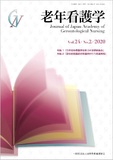Japanese
English
- 販売していません
- Abstract 文献概要
- 参考文献 Reference
抄録
目的:65歳以上の骨・関節疾患術後高齢者が退院に際して抱く不安の内容を明らかにする.
方法:整形外科病棟から自宅退院予定の患者10人を対象に半構造化面接を行い,質的記述的に分析した.
結果と考察:退院に際して抱く不安のカテゴリーは,【痛みが残るのか】【元の状態にもどれるのか】【姿勢・動きに気をつけなければならない】【自分ではできないことがある】【先々どうなるのかわからない】からなり,不安に影響を与える内容は【回復へのそこそこの満足感】【退院後の生活への備え】【支えてくれる人がいるか】【自立の程度】【現実的な目標がある】からなった.痛みの継続や姿勢・動きに気をつけながらの生活は整形外科術後の特性を表しており,退院後の生活の質を大きく左右し不安に影響を与えることが明らかとなった.退院後の自分の姿や生活を想像したり検討できているかの査定を行いながら介入し,高齢者が抱く不安に対して具体的な方法や対策を共に考え支援をしていく必要がある.
Aims: The aim of this study is to explore the anxiety of an elderly orthopedic patients after bone and joint disease surgery about the time of discharge.
Methods: The participants were ten orthopedic hospitalized patients aged 65 years or above. A semistructured interview was conducted, and the qualitative data were content analyzed.
Results: The results showed that anxiety about the time of discharge consists of five categories: [whether any pain remains], [whether full recovery is possible], [being careful about posture and movement], [there are several things I cannot do] and [I cannot imagine what may happen in the future]. We also found five categories that affect the level of anxiety: [feeling of moderate satisfaction on recovery], [preparation for life after discharge], [whether a cooperating person exists], [the degree of self support], and [having a realistic purpose].
Conclusions: One of the orthopedics postoperative characteristics is the need to be careful in daily life about posture and movement, and continuous pain. In addition, it was revealed that this need greatly controlled the quality of life after discharge and affected the level of uneasiness. It is necessary to make interventions after assessing whether patients can imagine or consider the state and life after discharge, and to support and consider concrete methods and measures with them.
Copyright © 2020, Japan Academy of Gerontological Nursing All rights reserved.


